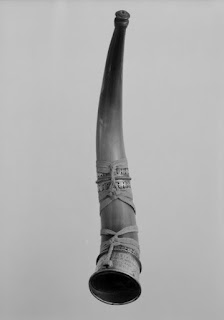My vision for 2050
H aving looked back at past couple of years in this post , let us look forward now. I take the year 2050 as a benchmark for a vision that I hope might become reality in the ideal case, based on predictions and also personal wishes and recommendations. How far will “breeding-back” be by 2050? By 2050, if things go well for all the projects that exist today, all of them will be rather progressed (33 years mean 11 generations at maximum), and there are good chances that a number of individuals already reached my “ second milestone ”, uniting all achievable aurochs-like characteristics in one individual. However, I think one should not make illusions on the genetic stability of the populations. Depending on the selection policy and breeding technique of the respective projects or herds, the populations will be more or less progressed and many individuals might resemble the aurochs quite well already, but probably in a variation spectrum that also includes a lot of traits of the founding br...

